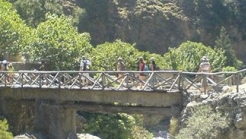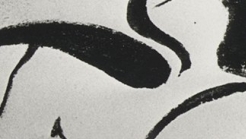

Greece
The Byzantine museum is located northeast of the Acropolis (Its-Kaleh) of the castle of Ioannina. It is a two storey building, on the ground floor of which the main exhibition is housed, comprising of findings (sculptures, coins, ceramics, pictures, bema doors, gospels) from the 4th to the 19th century.
The Byzantine museum is located northeast of the Acropolis (Its-Kaleh) of the castle of Ioannina. It is a two storey building, on the ground floor of which the main exhibition is housed, comprising of findings (sculptures, coins, ceramics, pictures, bema doors, gospels) from the 4th to the 19th century.
The permanent exhibition is laid out in seven rooms, corresponding to three exhibitional units: Paleochristianic, Byzantine, Metabyzantine. The jewellery exhibition is a part of the museum. There are exhibited ecclesiastic and various personal collections’ exhibits.
The museum is equipped with a workshop for the maintenance of ceramics, murals, mosaics and stone, as well as storage space in the underground area of findings’ reception.
The aim of the Ioannina Byzantine Museum is to collect, protect, study and promote works and objects of art from the 4th to the 19th century. Also, to be the center of a space of civilization, housing musical and theatrical events, temporary exhibitions etc.


The biggest canyon in Europe and one of the biggest shoreside canyons in the Balkans, it is located in the Chania Prefecture on the White Mountain line, and is a unique experience for any visitor.


The Museum Nikos Kazantzakis in Myrtia Heraklion opened on June 27, 1983 by the culture minister Melina Mercouri.


The Acropolis hill was the site for the most important and glamorous temple of the ancient city, dedicated to Athena, the protector godess of the city. This sacred site is connected to the most important myths of ancient Athens, the great religious ceremonies.
1039 Ε 6061 01515 00